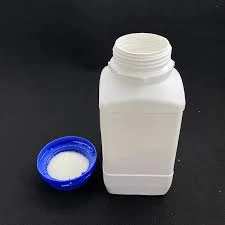The Role of Calcium Carbonate (CaCO3) as a Filler in Plastics
Calcium carbonate (CaCO3) is a versatile and widely used mineral in various industries, particularly in the production of plastics. As a filler, it plays a crucial role in enhancing the properties of plastic materials, leading to improved performance, cost-effectiveness, and sustainability. This article explores the various aspects of using CaCO3 as a filler in plastics, including its benefits, applications, and environmental impact.
Understanding Calcium Carbonate
Calcium carbonate is a naturally occurring compound composed of calcium, carbon, and oxygen. It is primarily derived from limestone, marble, and chalk. In its powdered form, it is white, odorless, and non-toxic, making it suitable for use in a wide range of applications. In the plastics industry, CaCO3 is employed as a functional filler, which means it is added to plastic formulations to enhance certain properties rather than to serve merely as an inert filler.
Benefits of CaCO3 as a Filler
1. Cost-Effectiveness One of the main advantages of using CaCO3 as a filler is its low cost compared to other fillers. It can significantly reduce the overall production costs of plastic products without compromising quality. This economic benefit is particularly appealing to manufacturers looking to maintain competitive pricing.
2. Enhanced Mechanical Properties Incorporating CaCO3 into plastic formulations can improve mechanical properties such as tensile strength, impact resistance, and stiffness. By increasing the rigidity of the plastic, CaCO3 helps to produce more durable and reliable products.
3. Improved Processing Characteristics CaCO3 can enhance the flow characteristics of plastics during processing. Its addition can facilitate easier molding and extrusion, contributing to lower energy consumption and higher production efficiency.
4. Natural White Color The natural white color of CaCO3 is advantageous in various applications, particularly for products that require a bright and clean appearance. It can enhance the opacity of plastic products, making them visually appealing.
5. Environmental Benefits As a naturally abundant mineral, CaCO3 presents an environmentally friendly alternative to synthetic fillers. Using CaCO3 supports sustainability initiatives by reducing reliance on petroleum-based materials in plastic production.
caco3 filler plastic

Applications of CaCO3 in Plastics
Calcium carbonate is employed in a wide range of plastic applications
- Packaging Materials In the packaging industry, CaCO3 is used in the production of films, containers, and bottles, providing enhanced stiffness and dimensional stability.
- Automotive Components In the automotive sector, CaCO3-filled plastics are utilized in interior and exterior parts, contributing to reduced weight and improved fuel efficiency.
- Construction Materials CaCO3 is commonly used in PVC and other plastic building materials, adding strength, durability, and affordability to products like siding, windows, and pipes.
- Consumer Goods Everyday items such as toys, household products, and electronics often incorporate CaCO3 to improve their mechanical properties and reduce production costs.
Environmental Considerations
While the use of CaCO3 as a filler in plastics brings many benefits, it is important to acknowledge potential environmental concerns. The extraction of calcium carbonate can result in habitat disruption, and the production process must adhere to responsible practices to minimize ecological impact. Furthermore, the industry is increasingly focused on recycling and reusing plastic materials, promoting a circular economy.
Conclusion
Calcium carbonate is a valuable filler in the plastics industry, offering a range of benefits, including cost efficiency, enhanced mechanical properties, and environmental sustainability. Its applications span various sectors, from packaging to automotive manufacturing, showcasing its versatility. As the industry continues to evolve towards greener and more sustainable practices, the role of CaCO3 in plastic production is likely to expand, contributing to a more eco-friendly future. With ongoing research and innovation, CaCO3 remains a critical player in the quest for improved plastic materials.

